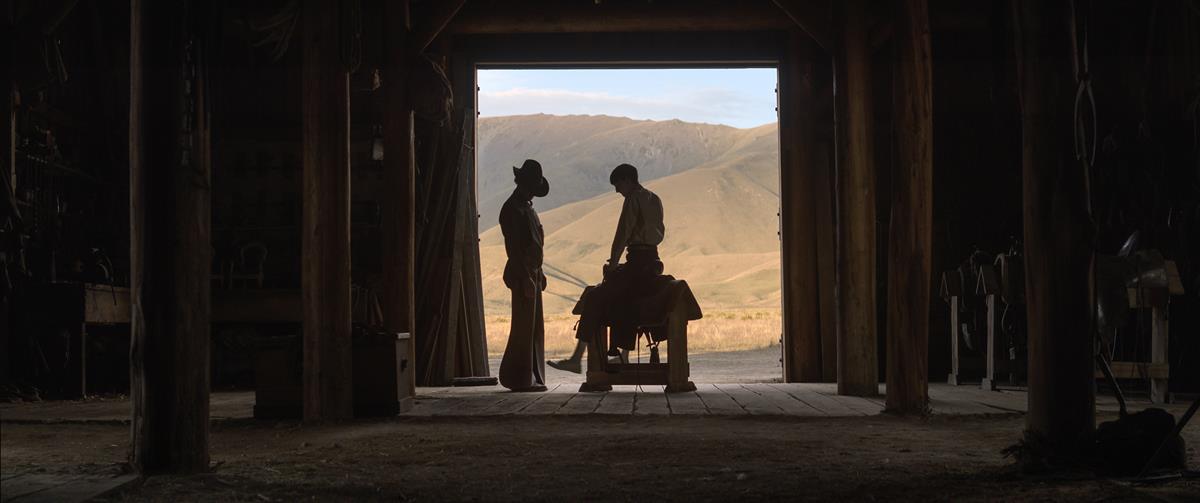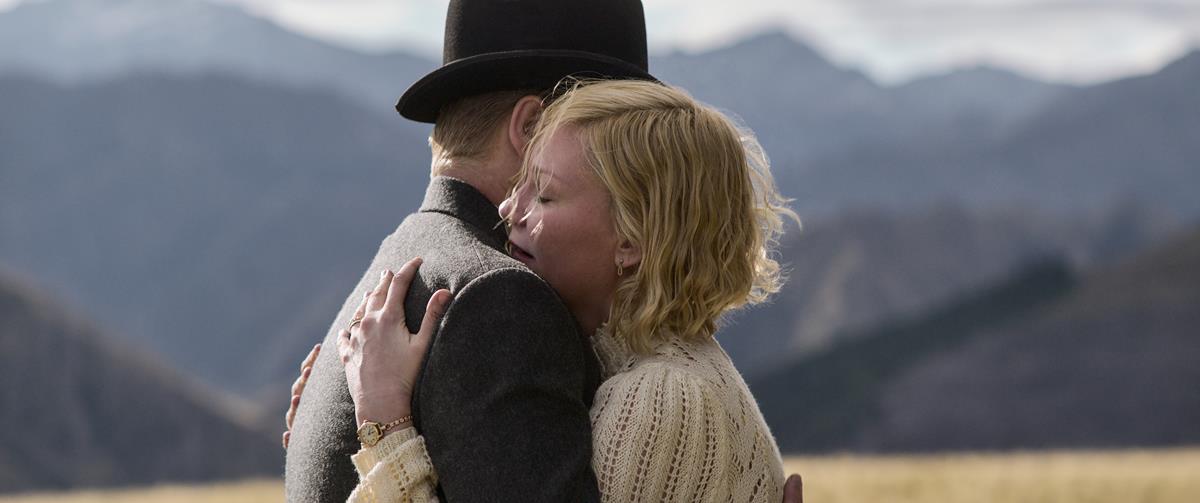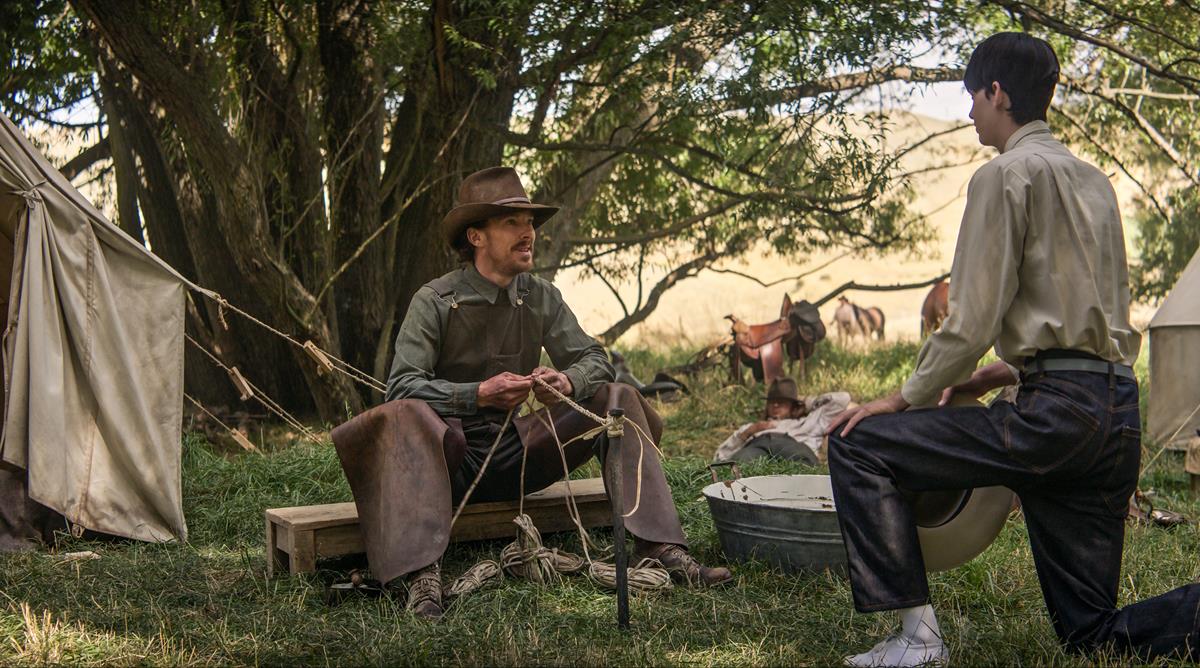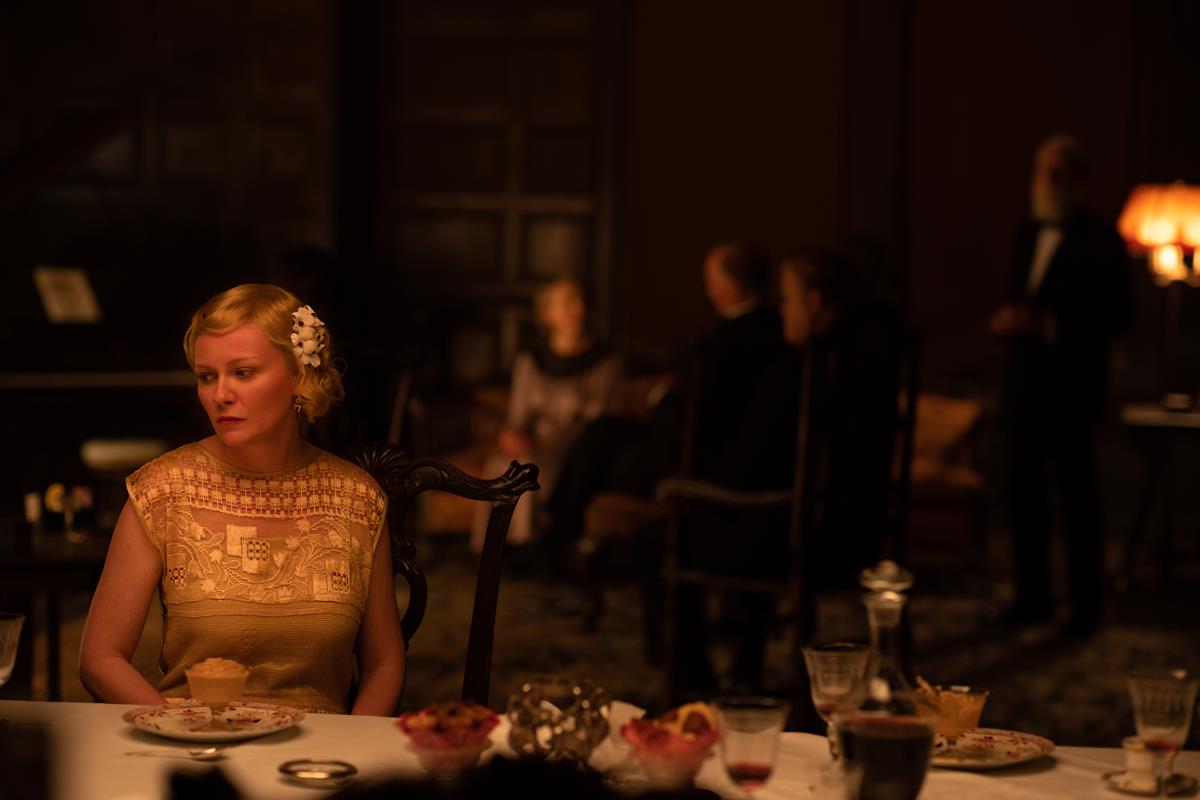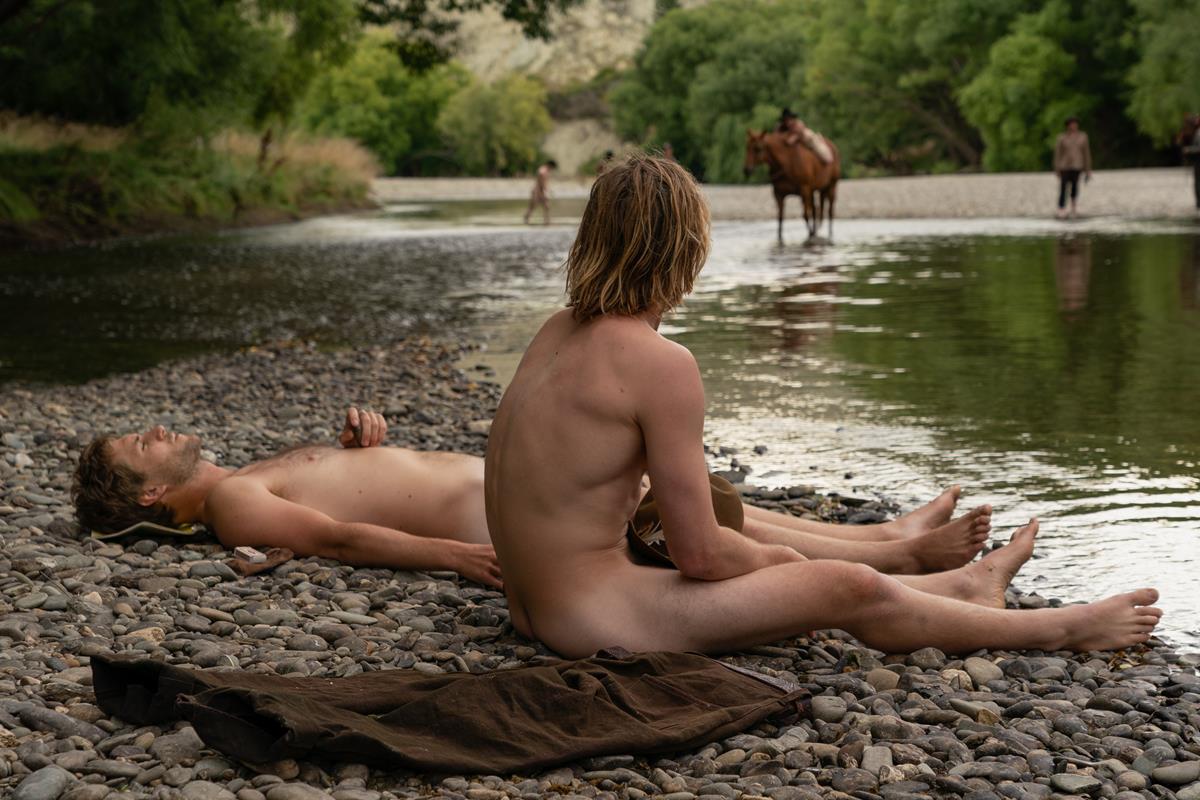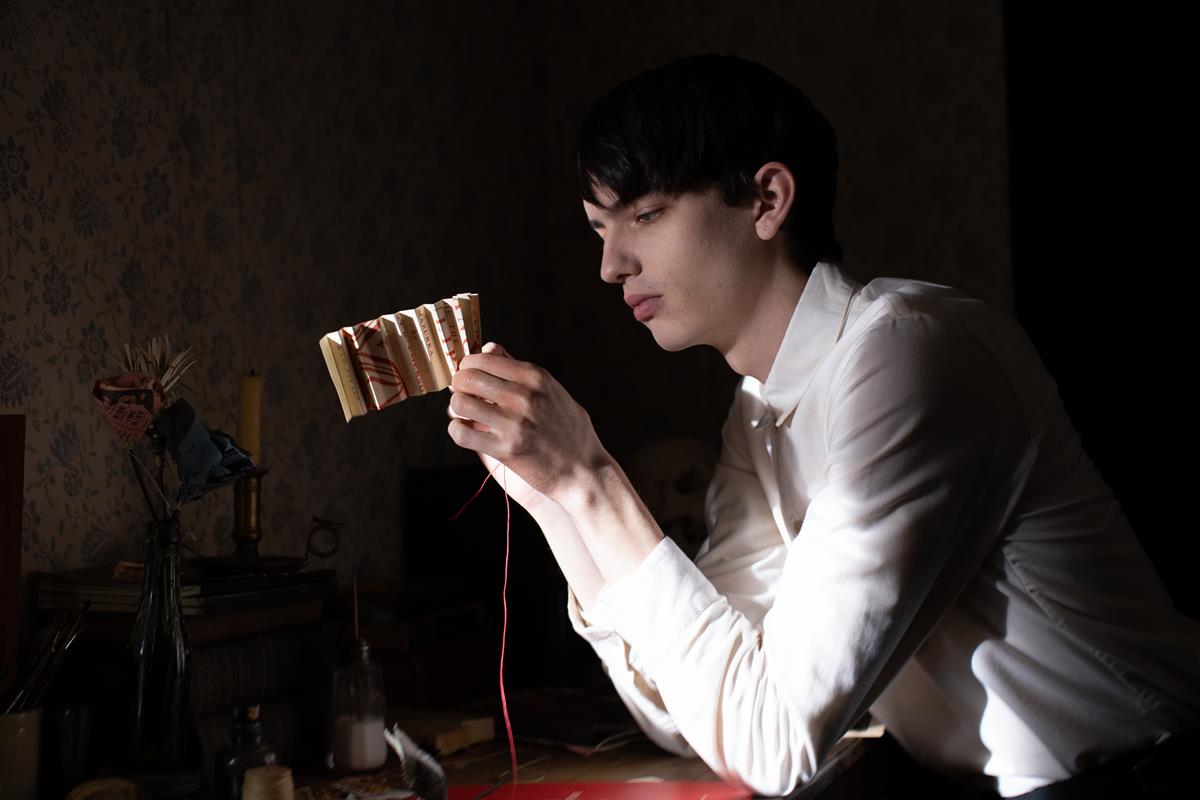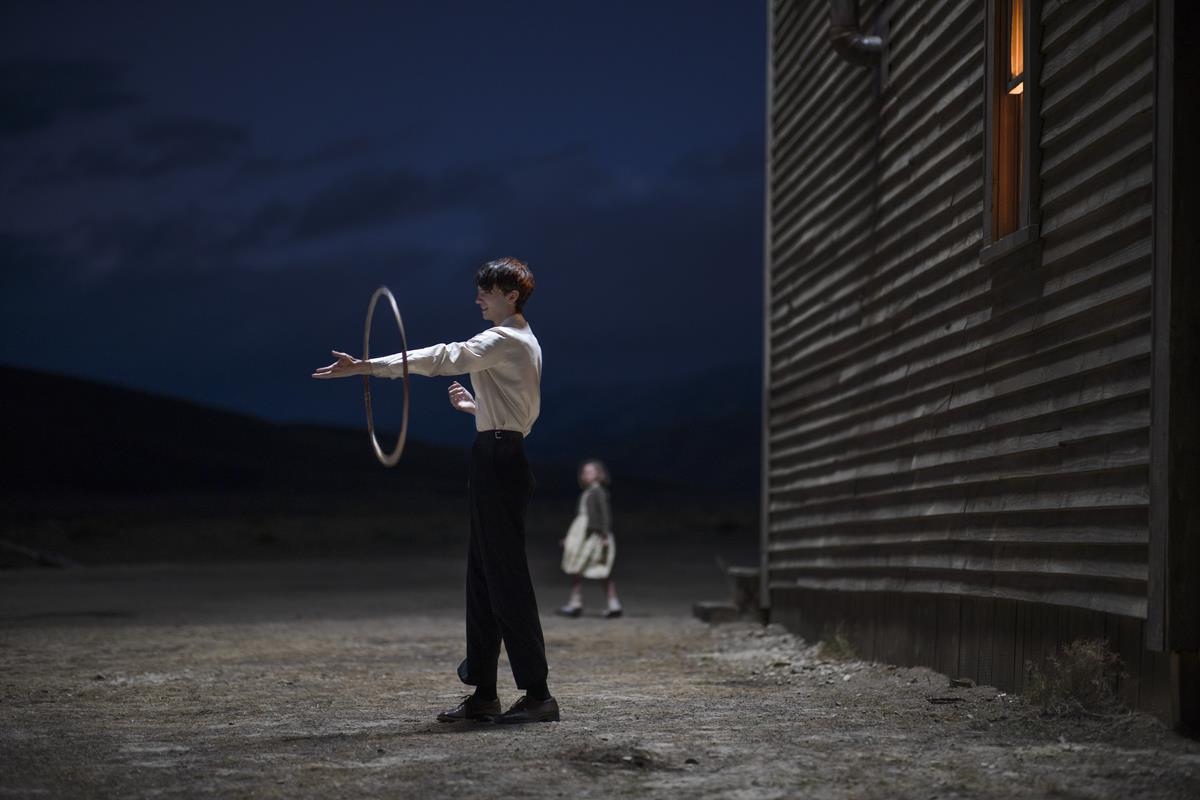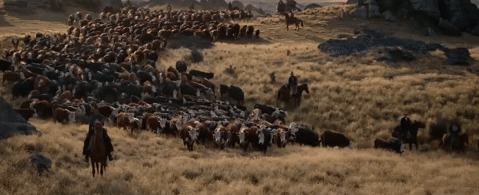
About half way into Jane Campion’s new movie, the knot tightens. It is imperceptible, such is the pace of the way in which tension is built, but it grips, much like the onscreen portrayal of cowboys painstakingly braiding new rope from rawhide. Given that this is a Jane Campion film, the metaphor is surely not coincidental.
Based on the 1967 book written by Thomas Savage, The Power of the Dog contains all the trapping of an archetypal Western but deviates dramatically from cliché.
In his review for The New Yorker, film critic Anthony Lane notes that the film’s title is taken from the 22nd Psalm in the King James Bible: “Deliver my soul from the sword; my darling from the power of the dog.”
“As the movie ends,” Lane posits, “you can’t help asking yourself: Who exactly is the dog, and who’s the darling?”
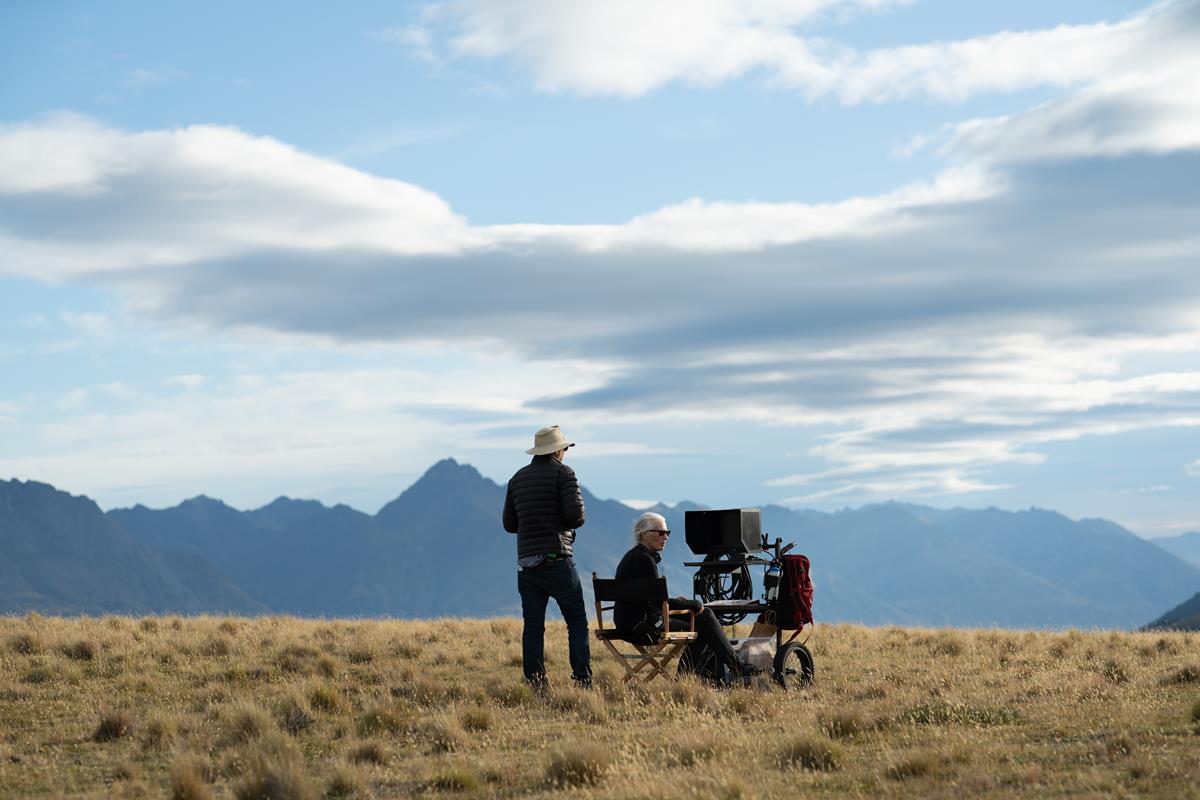
READ MORE: “The Power of the Dog” is Jane Campion’s Anti-Western (The New Yorker)
“Our main inspiration in terms of other films was A Man Escaped (1956) by Robert Bresson, where simplicity and minimalism is used to craft an incredibly tense story,” explains director of photography Ari Wegner, ACS (Lady Macbeth, Zola) and winner of this year’s TIFF Variety Artisan Award. “Everything in the film from score to color palette to wardrobe and camera movement is very unshowy. No one element and certainly not the cinematography should not be grabbing your attention.”
Yet grab it does, as The Power of the Dog seduces the audience with an accretion of detail amid the foreboding hills of Montana. Even this feels dislocated since the production shot in the Hawkdun Ranges in Central Otago in South Island, New Zealand. Its sparsely populated, grassy plains and rocky mountains proved a remarkable match for Montana.
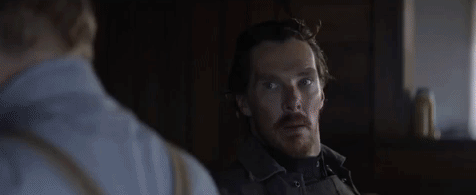
Campion has described the deeply complex central character Phil Burbank, a brilliant but cruel, hyper-masculine cattle rancher, played by Benedict Cumberbatch, as one of the all-time great characters of American fiction. He is in an impossible situation of being an alpha male who is homophobic and also homosexual.
Wegner spent roughly a year working with Campion, location scouting, storyboarding, and developing the visual style for the film, as well as working with production designer Grant Major (Oscar winner for Lord of the Rings: The Return of the King).
“For me that was incredibly exciting,” says Wegner. “Not just the prospect of working with Jane on such an amazing story but to be able to prepare properly and spend the time to get it right. I’ve shot there before and I know how the landscape changes from season to season. It was really important for us to spend time at the location in the season that we were going to be shooting. I didn’t do any other projects in that period, familiarizing myself with the property to find the great angles and getting to know the light.”
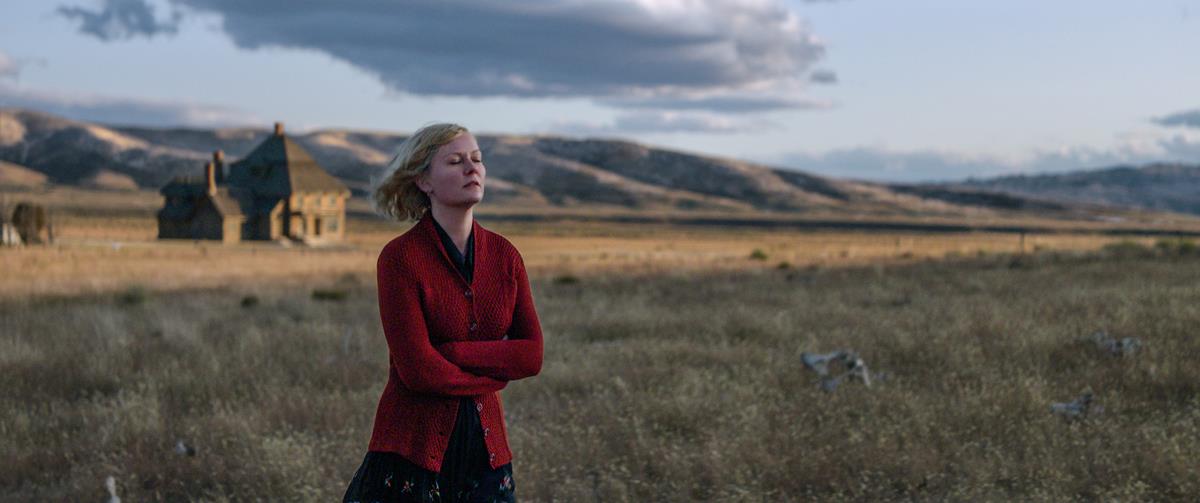
The property is the large ranch house and outbuildings built in the style of 1920s Montana. This is a settlement on the cusp of modernization, where saddle-hardened cowboys live uneasily with cars and trains, college education and civil society of the nearby town.
“I read the book as soon as I got the call from Jane and its descriptions of the land, the house and the characters within it as well as the minute details make up a holistic world,” Wegner says.
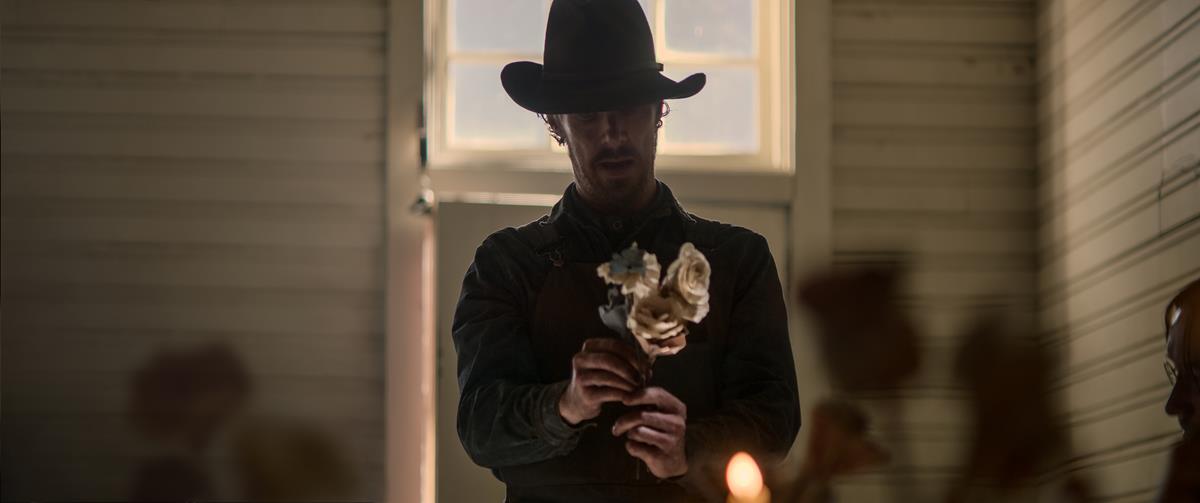
She participated in decision-making about the location of the house and throughout the art department build ensuring that the set allowed her to best capture the interplay of shadow and light that unfolds so dramatically in the mountain ridge behind the set.
“Shooting in New Zealand can take a lot of patience and endurance to deal with really intense weather, but it’s a wonderful experience,” says the native Australian. “I’ve always loved it. It’s a landscape that gives so much. You can photograph a vast plain with a mountain range that rises up behind it as one image, which is something that is not possible in Australia.”
“I was attracted to this concept of a very bright exterior with interiors that are very dark,” she tells Leslie Combemale. “Because the outside is so bright, coming inside feels really dark, and I think both Jane and I really loved the juxtaposition of this brutal, harsh outside, where you see everything, then coming back inside where everything’s a lot more shadowy, and maybe you only see glimpses of light. I think that’s in the characters as well.
“They’ve got an exterior that they project, which is clear, and then their interior world is a lot more nuanced, and, at times, quite dark. We worked a lot with the production designer, Grant Major, who is a wonderful collaborator and an amazing artist with what he does, to make sure that the house we were designing had a dark interior, with floorboards and timber panels on the wall that are dark, to create a kind of claustrophobic grandeur.
LIGHTS, CAMERA, ACTION! SPOTLIGHT ON FILM PRODUCTION:
From the latest advances in virtual production to shooting the perfect oner, filmmakers are continuing to push creative boundaries. Packed with insights from top talents, go behind the scenes of feature film production with these hand-curated articles from the NAB Amplify archives:
- It’s Always Personal With Director Pablo Larraín… This Time for “Spencer”
- Dashboard Confessional: Ryusuke Hamaguchi’s “Drive My Car”
- “Parallel Mothers:” How Pedro Almodóvar Heralds the New Spanish Family
- “The Souvenir Part II:” Portrait of the Artist As a Young Woman
- Life Is a Mess But That’s the Point: Making “The Worst Person in the World”
“It is also a space where, especially for Rose, she’s always hyper-aware of where Phil is. Within that darkness, you sometimes feel like he may be somewhere you can’t see. There is a thriller or horror aspect to it, of this monster in the house where there’s no escape.”
READ MORE: “Power of the Dog” Cinematographer Ari Wegner on Finding the Light in Jane Campion’s Mythic Western (The Credits)
Wagner described the meticulous planning that went into the film to MovieMaker Magazine’s Caleb Hammond.
“It can’t be underestimated how long planning takes,” she told Hammond. “For me, it’s at least 100 hours to properly plan a film. But it’s probably like four or five hours max of storyboarding before your brain melts down.
“Jane and I did about a month one-on-one together. We went out of town close to the location. So we’re in the office with turned-off phones and emails, and just got to work. We probably had at least four weeks of full-time storyboarding. It was probably about five or six hours a day of that, and if we were to take a break, it would be like, ‘OK, let’s go for a drive and go on location to see if this plan actually works in reality.’
“Or ‘Let’s go for a walk and talk about how we’re going to do some other difficult thing.’ Just being together, planning — 100 hours is the bare minimum to do it properly. And that’s one-on-one without any distractions. It’s my happy place when I’ve got that. Everything becomes easier after that.”
READ MORE: Power of the Dog Cinematographer Ari Wegner on the Daily Storyboarding Max ‘Before Your Brain Melts Down’ (MovieMaker Magazine)
Planning the production, Campion and producer Tanya Seghatchian met with novelist Annie Proulx, who wrote the short story “Brokeback Mountain” and penned an afterword to Savage’s book in 2001. They discussed writing about the American West from a female writer’s perspective. Her encouragement, Campion says, was incredibly helpful in giving her the confidence to tell this very American, masculine story.
An important reference for Campion and Wegner was the work of photojournalist Evelyn Cameron, who documented the American West at the time the film is set. They also referenced Time magazine archives, featuring photography of cowboys of the era, in addition to the Ken Burns documentary series The West, which offered the team a snapshot not only of 1920s Montana, but everything that came before it.
“Cameron’s diary and photographs offered an insight into that world from a woman’s and an outsider’s perspective,” Wegner says. “Her pictures — there is one of a woman standing on a horse that feels super conceptual — evoke a strong feeling that these characters could be alive now. We wanted to create that kind of realness in the moving image.”
Any desire to shoot on film was taken out of their hands because the location was so remote dailies could not be processed in time (and the cost of insurance was prohibitive).
“There are no labs in New Zealand that can take that scale of dailies footage and the idea of shipping unprocessed camera neg is a really scary process for everyone — myself included,” she says.
She shot large-format on Alexa Mini LF paired with vintage anamorphic Ultra Panatar lenses to frame actors against the vast landscapes. The while the interiors of the ranch house, with its Swiss-style wooden architecture are dark. She bounced light off molded glass to simulate moonlight and the brooding atmosphere inside.
Toward the end a sequence takes place in a barn at night between Phil and Peter (played by Kodi Smit-McPhee). There’s so much hiding in the shadows. Everything begins to lean closer: Phil rolling a smoke in a macro closeup, a very tactile shot that unfurls into a slow build that climaxes with the sensual gesture of Peter holding the cigarette to Phil’s lips. Macro shots of rope plaiting are used to underline Phil’s desire and the sexual tension between them. The scene cuts to the horses as a way to transition out of the sensuality into the morning light, but retain the mood and let it sit in the air.
It deconstructs the myth of Marlboro Man.
“The idea of giving love and attention to a macro shot was definitely in the language of the film from the start,” Wegner says. “We know by virtue of the script how much attention we’re going to pay to things like hands on rope, playing the piano, playing the banjo. It’s an easy thing to say you’ll grab a macro but it’s harder to shoot. I had a whole list that we storyboarded and handed to (Steadicam/A Cam) Grant Adam to get. In a way there is something more iconic in the detail and texture of these shots than any of the big vistas.”
Jordan Kisner, in her profile for The New York Times, notes that even Campion’s “softest works” have a touch of what the director describes as “what was nasty, what isn’t spoken about in life.” Yet tenderness remains a through line in Campion’s films.
“Tenderness is very important to me,” she tells Kisner. “Because it is what brings me to my vulnerability, I guess. And I feel like that’s probably a hard place for me to go to, and it is the place where I feel most touched by life. I guess it’s the leading edge, you know, of my experience.”
Kisner writes that “tenderness” isn’t the first word that comes to mind when she considers Campion’s work:
“I cannot shake the image of the title character in her first feature, Sweetie, shoving porcelain horse figurines into her mouth and chewing them until blood spills out of her smile. But after a while, the tenderness starts to emerge. It’s a bit like the experience of looking for a long time at a portrait and then realizing, as you look, that the reason the portrait makes you feel so much is the way the painter worked with the negative space, the shadows, the things you don’t immediately know you’re looking at. Tenderness may not be the first thing you see in a Campion film, but it is fundamentally what she’s painting with.”
READ MORE: Inside Jane Campion’s Cinema of Tenderness and Brutality (The New York Times)
Want more? Watch Jane Campion, Benedict Cumberbatch and Kirsten Dunst discuss the making of The Power of the Dog during a Q&A at the 2021 AFI Fest:
Campion, Cumberbatch and Dunst also appeared at Film at Lincoln Center:
You can also listen to Campion’s interview with Scott Simon for NPR, where she discusses why she was initially drawn to the story.
“I think what most impressed me was that it was clear that Thomas Savage had lived on a ranch, that this was his life,” Campion tells Scott. “This was not writ large and some sort of romantic version of the West. Thomas Savage moved to a ranch with his mother, which is the story which is really told in the film as well, and the brother of the man that his mother married was talented — like, great chess player and, you know, went to Yale, et cetera — but also, like, a really hardened cowboy and terrible bully.”
READ MORE: ‘The Power of the Dog’ is Jane Campion’s first film in 12 years (NPR)
What Campion loved most about Savage’s book was the cowboys and cowboy life, which have “always been a big thing for me,” she says. “But, you know, I guess the honesty, the truth of it and the fact that it had a narrative that just grew more and more interesting and exciting. And, you know, I really didn’t know where I was with it. Like, what’s going to happen? Who’s going to be hurt? Something’s going to go wrong, I just know. And it really surprised me at the end. I had to sort of go back and check it.”
Check out the full interview in the audio player below:
Jane Campion and producer Emile Sherman sat down with Screen Australia to discuss their collaboration and the challenges they faced while filming on the South Island of New Zealand:
You can also listen to Campion discuss what she calls “The Last Scene” for The New York Times video series, “Anatomy of a Scene,” featuring a moment between Phil and Peter inside the barn. “It’s the culmination of their relationship and so many different parts of the film that have been seeded right from the very beginning coming together,” she says.
Ostensibly focused on the braiding of a rope, the sequence has elements of seduction, but the intentions of the characters may be a bit more complex than what is directly shown:
Listen to a conversation with Campion, Wegner, editor Peter Sciberras, production designer Grant Major, costume designer Kirsty Cameron, supervising sound editor Robert Mackenzie, and production sound mixer Richard Flynn:
Watch this directors roundtable hosted by The Hollywood Reporter, which gathers together Kenneth Branagh (Belfast), Jane Campion (The Power of The Dog), Guillermo del Toro (Nightmare Alley), Asghar Farhadi (A Hero), Reinaldo Marcus Green (King Richard) and Pedro Almodóvar (Parallel Mothers) to discuss their films:


